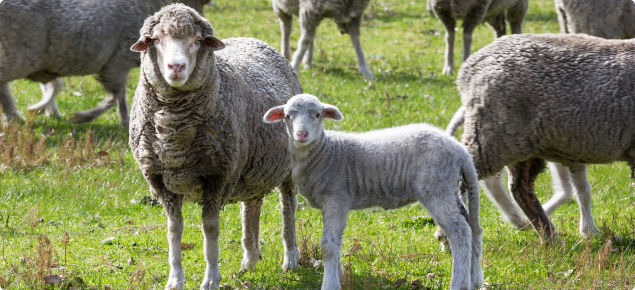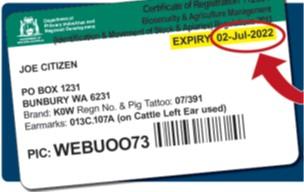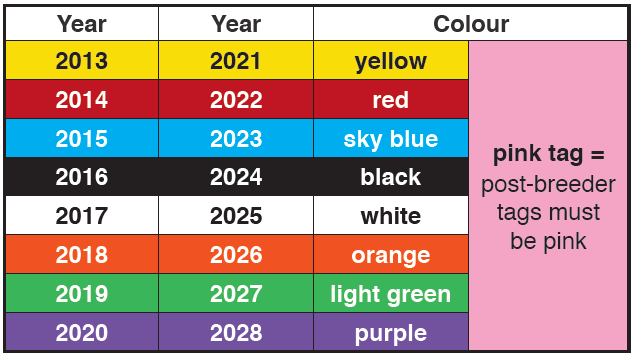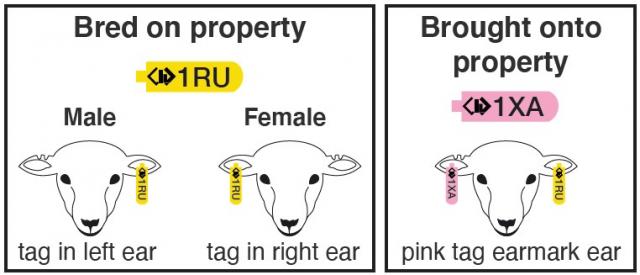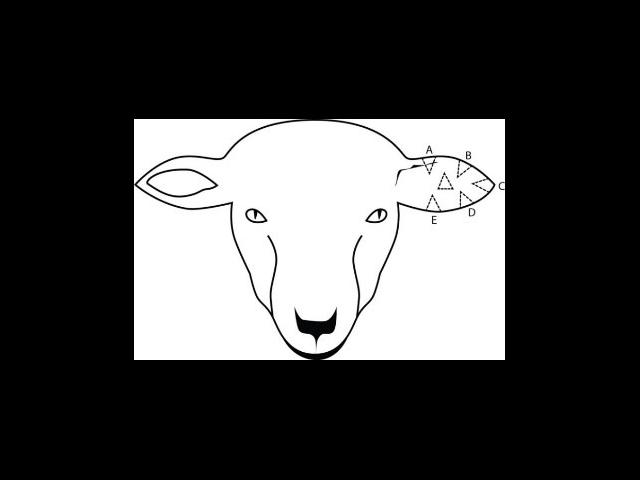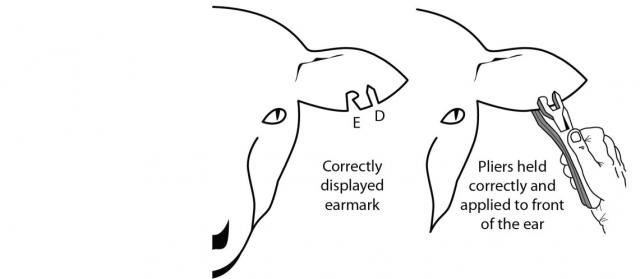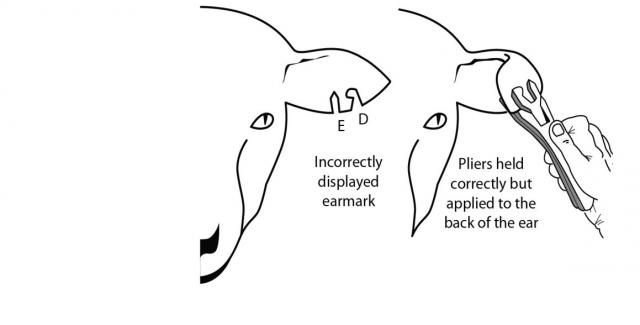Owners must register
All sheep owners must be registered with the Department of Primary Industries and Regional Development (DPIRD).
There are now two avenues to register: via the new online Brands Portal or with the existing paper-based applications. The Brands Portal is a secure website that allows Beekeepers, Livestock owners and supply chain location operators to manage their registrations online. It is the preferred option for submitting registrations. To register as an owner of stock, login to the Brands Portal online.
You will be taken to the Welcome page which will guide you through the Digital Identity setup and Brands Portal login procedures. If you are unable or prefer not to use the Brands Portal, you can download and send in the completed paper forms via email or post.
For more information see:
- Livestock ownership, identification and movement in WA
- Registering as an owner of stock
- Application for registration as an owner of stock
On registration you will be issued registered identifiers (stock brand, earmark and pig tattoo) and a property identification code (PIC) for the property where the animals are kept. A PIC card is issued that lists the properties that the owner has nominated to run stock on and the registered identifiers for use with the stock.
Identification requirements
Sheep in Western Australia must be identified with an approved NLIS tag or electronic device.
Sheep may also be identified with the registered earmark listed on your PIC card. Earmarking is optional, but if you do choose to identify your sheep with an earmark, it must be applied in the approved manner and in the same location and orientation as illustrated on your registration certificate.
More information on each of these identification requirements are provided below.
| Sheep identification | Female | Male |
|---|---|---|
| Year of birth coloured tag | Right | Left |
| Pink tag | Left | Right |
| Registered earmark (optional) | Left | Right |
| Cull / age mark tattoo (optional) | Right | Left |
NLIS identification
The BAM (IMSA) Regulations underpin the NLIS, requiring sheep to have an accredited NLIS ear tag bearing the registered brand or PIC of the owner.
There are two types of NLIS tags for sheep – visual and electronic. All NLIS ear tags – visual or electronic – must remain in the animal for life. An animal can only have one electronic device.
When the animal is on the property of birth, use the NLIS tag that is colour coded for the year of birth. This should be placed in the right ear for females and left ear for males.
The year of birth colour system has eight colours. Each colour designates a year on a rolling cycle starting with the colour black and ending with sky blue, returning to black.
Pink is used for post-breeder tags to show that sheep have been brought onto the property, usually from a different owner. Pink tags are placed in the ear opposite year of birth tags.
NLIS visual tags
If using visual tags, when sheep are sold, the new owner must apply an additional pink NLIS tag, in the opposite ear to the year of birth coloured tag (in the earmark ear) before leaving the property. It is advised to pink tag on arrival or on first handling.
Using your brand on the visual tags means that re-tagging is only necessary when the stock are moved to a property with a different brand, usually when they are sold to a new owner. This is the least time consuming option.
Owners using a PIC on their visual tags must be aware that if they move their stock between their properties with different PICs e.g. agistment blocks, then they will have to re-tag those animals according to PIC of location.
NLIS electronic devices
NLIS accredited radio frequency identifier (RFID) tags, NLIS electronic devices, are available for use. These devices have the PIC of the property they are purchased for on the outside as part of an individual 16-character identification number. They can only be used on this property.
If an electronic device is fitted, the RFID is scanned by a reader and its details are used to record the movement of stock to a new PIC on the NLIS database. No additional tags are required.
(Until there are scanners in the supply chain, the new owner of sheep with an electronic tag will need to identify those animals with a pink NLIS visual tag prior to the stock leaving the property to saleyard or slaughter.)
NLIS devices can be purchased from your rural supplier or directly from an approved manufacturer.
South west land division
Sheep in the south west land division must be identified with an accredited year or birth coloured NLIS ear tag bearing the brand or PIC of the owner when they are weaned, before they reach six months of age or before they are moved from the property, whichever occurs first.
Outside the south west land division
Sheep outside the south west land division must be fitted with an NLIS ear tag of the correct year colour, printed with the current owner’s brand or PIC when they are first shorn or before they are moved from the property, whichever occurs first.
Identification exemptions
Unweaned lambs moved with their correctly identified mother between properties with the same PIC do not need to be identified.
Registered stock brand - two letters and one number
Your registered brand consists of two letters and a number. One of the letters may be ‘lazy’, that is, lying on its side to the left.
Visual NLIS tags are most often printed with the brand of the stock owner.
Electronic NLIS tags will be imprinted with the PIC of the property they were purchased for use on. These devices can be ordered with your brand printed on the back button if you request it.
Registered earmark - combination of two shaped notches
Your earmark is a combination of two specified shape notches taken out of the ear in the correct location, A to E, as illustrated on your registration certificate.
If you choose to earmark your sheep, it is to be applied on the left ear for females and right ear for males. This is known as the 'earmark ear'.
An earmark must be at least 12mm across at its maximum point when it is applied. Only approved earmarking pliers can be used.
See Table 1.
The appearance of an earmark will alter if it is applied from behind the ear instead of from the front. This will not be your legal earmark and may belong to someone else (see Figures 2a and 2b).
Age, tattoo or cull marks
If you choose to use age, tattoo or cull marks, they must be placed in the ear opposite to that of the registered earmark (whether the earmark is applied or not). The earmark ear must not have any other marks, tags or tattoos other than pink NLIS tags.
Approved identification
The BAM (IMSA) Regulations allow breed societies that have a preferred system for identifying animals to use the society mark. These marks are an alternative to the optional registered earmark.
They must have their preferred identification approved by the Registrar of Stock and Apiaries before using this option. See Approved identifiers for livestock for the application procedure.
These owners must still be registered as an owner of stock with DPIRD and also meet NLIS identification requirements.
Bringing sheep onto your property
All correctly identified sheep brought onto a property need to be identified in the earmark ear with a pink NLIS visual tag imprinted with the brand or PIC of the new owner before leaving the property. It is advisable to tag on arrival to assist in owner identification if the animals stray and to ensure the stock are correctly identified prior to leaving that property.
Imported sheep (from the Eastern States) that are not correctly identified, must be identified within 14 days of arrival or before they are moved from the property, whichever occurs first.
If introduced sheep have an NLIS electronic device and you wish to use these, they need to be scanned and transferred to your PIC on the NLIS database. A pink visual tag will be needed if these stock are sent to a saleyard or abattoir.
Identification equipment
All identification equipment and tags can be purchased through rural suppliers or online directly from the manufacturers.
Equipment for applying the registered earmark must not be removed from the property/ies of the PIC they are registered to without a permit from DPIRD.
NLIS tags with a PIC or brand can only be applied to animals while on the property/ies registered to that PIC unless a permit has been issued by an inspector.
NLIS tags cannot be taken to a saleyard or similar facilities to be applied unless a permit has been issued by an inspector.
Moving sheep – waybills
Sheep must not be moved off a property without having correct identification and a completed waybill or National Vendor Declaration/waybill (NVD/waybill).
The waybill provides proof that stock are being moved with the owner’s consent and it must remain with the stock while they are being transported.
The owner or person in charge of the stock at the property of dispatch has the responsibility to accurately complete the waybill and give it to the transporter before the stock are moved. This may not be the current owner if ownership has changed on property prior to transport.
The documents must be completed in triplicate and all copies kept for seven years. The original must travel with the stock and be handed to the consignee, or recipient of the stock, at the destination. The carrier retains the first copy and the second copy remains with the consigning owner.
An NVD/waybill is a combined form that records sheep movement information and also provides additional information about the food safety and health status of the stock. An NVD/waybill is required whenever livestock are moved for sale, export or slaughter.
Access to an NVD/waybill requires accreditation with the Livestock Production Assurance (LPA) program. Contact 1800 683 111 or go online at www.lpa.com.au. The NVD/waybills are supplied pre-printed with the owner’s PIC as either a book (at a cost) or as an electronic form (free).
Plain waybill books are available from the Brands office on 1300 926 547 from Monday to Friday, 8.30am-4.30pm AWST (excluding public holidays). They are used in particular circumstances when an NVD/waybill is not required, e.g. transporting an animal to the vet or agricultural show.
Regular movement between properties with the same PIC
The PIC card, or a full copy of it, can replace the need to fill out a waybill each time stock move between properties with the same PIC.
Properties involved must be listed on the card and stock being moved need to be identified to that PIC/brand. It also allows movement of branding and earmarking equipment between the properties.
NLIS database movement recording
Movements of sheep to a property with a different PIC must be recorded on the NLIS database within 48 hours of arrival, even if you own both PICs.
Sheep with visual NLIS tags are recorded as mob-based movements (MBM).
Sheep fitted with an NLIS electronic device are scanned with a reader and transferred with their individual internal RFID and external NLIS ID numbers as with cattle.
It is the responsibility of the receiver of the stock to make sure the NLIS database recording is done and includes movements to and from agistment properties.
For sheep sold in saleyards or at public auction, the saleyard operator will record the MBM to the buyer’s PIC. This is the one instance where the receiver does not have to do the transfer, however they should still check that it has been done.
Stock owners can create a free NLIS database account through the website www.nlis.com.au.
Stock from other States
Stock imported into Western Australia and accompanied by the ‘Health Certificate for Movement of Stock to Western Australia’ form (LB1) may not have a waybill.
Stock and waybill inspections
Stock in transit can be inspected for correct identification and waybills by a DPIRD inspector or police officer at any time.
Offences under the BAM (IMSA) Regulations 2013
- Possessing stock that are not legally identified
- Using another person’s registered brand or earmark
- Possessing another person’s registered branding or earmarking equipment
- Applying your earmark or NLIS tags to animals on another person’s property
- Using another person's NLIS tags
- Removing NLIS ear tags
- Trading or moving animals without correct identification
- Failure to transfer animals on the NLIS database after movement to a different PIC.
The penalty for a breach of this legislation may be a fine of up to $20 000.
More information
In Western Australia:
T: 1300 926 547 (1300 WA NLIS)
E: email nlis@dpird.wa.gov.au
The national NLIS helpdesk:
T: 1800 683 111
E: support@nlis.com.au
W: integritysystems.com.au

